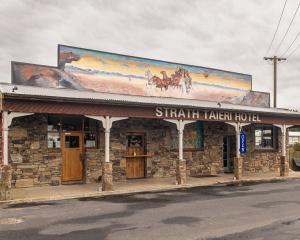
Cambrians is found in the Manuherikia Valley in Central Otago.
A short way off the St Bathans Loop Rd, a collection of cottages reminds passersby of the gold fever that shaped the area.
Cambrians is now a quiet collection of homes and holiday homes that have outlived the mining beginnings of the area.

And one must assume that only self-willed individuals would choose to live in the community that appears to be so isolated and exposed to harsh winter climes.
And, sure enough, a community spokesman said the dozen or so households of Cambrians held a meeting and collectively decided they did not want to help the Otago Daily Times with its feature on the tiny settlement.

And Heritage New Zealand points out not only the gold rush origins of the settlement, but its Welsh ones.
Gold was discovered in Dunstan Creek in 1861.
Cambrians was settled in 1863 as miners began working what became first known as Welshman’s Gully, the report by public historian Heather Bauchop says.
There were Morgans, Owens and Williams living there back then.
Historic photographs show early residences were sod, mud brick and timber frames clad with corrugated iron.

"The community centred on the Welsh Harp Hotel and a couple of stores, the chapel, and celebrated St David’s Day celebrations together," Ms Bauchop says.
"The Welsh Harp closed in 1918, the school closed in 1954 and the hall was dismantled and removed."
By the 1960s, many of the buildings that could be removed from the settlement were.

A new history began as a quiet holiday settlement, Ms Bauchop says.
There is a mix of permanent homes and holiday homes alongside the ruins of the mud brick Welsh Harp Hotel or the Dungey family residence,
Several small mud brick cottages still standing show the modest lives of the Morgan and Swinney families, she says.

It says the name was changed from Welshman’s Gully to Cambrian in 1876.
The word Cambria is itself a name for Wales, a form of the Welsh-language name for the country, Cymru.












